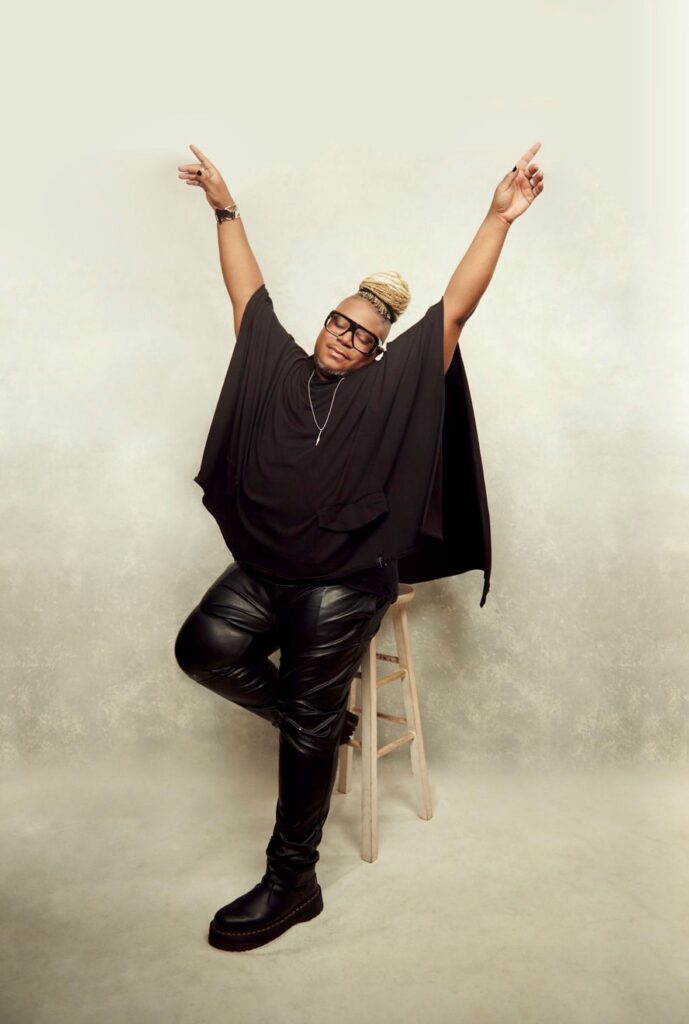Impact Stories
Leaders in Childhood Bereavement: Adam Stevens
marzo 29, 2023
The key to supporting grieving BIPOC Queer and Transgender youth is love.

In honor of International Day of Transgender Visibility, we are highlighting Adam Stevens, registered drama therapist, who works to supporting queer youth in transforming their grief into unapologetic joy and empowerment. Adam brings their deep knowing of personal grief to their work as the Program Manager for Bereavement and Mental Health Services at the Hetrick-Martin Institute (HMI), where they support primarily BIPOC queer and trans youth through creative arts therapy.
They spoke with us on the multi-faceted intersection of queer identity and grief, and the important work of ensuring that LGBTQIA+ youth are seen and heard throughout their grief journeys.
Tell us more about the multi-faceted intersection of queer identity and grief. How can someone’s transgender identity inform their grief journey?
As queer folx, we experience life differently than those who do not identify or claim queerness. It makes sense that our relationship to grief and loss would perform differently. For example, some of the grief we encounter is not connected to death, but rather to loss. More directly, I am speaking to the loss of parents, arguably our most core or central relationship, dear friends and family, and so on. This loss often occurs when we, as queer and trans folx come out, and/or begin to express our authentic queer selves more openly in mind, body, spirit, and heart.
Queer youth experience a disproportionate amount of death and loss. Grief and bereavement for Queer communities might include transitioning in terms of Queer identity (“coming out”); coming to terms with the intersectionality of Queer identity and religion/spirituality, racial identity, and/or ethnic identity; coping with collective trauma as a result of society violence against Queer people. Other losses Queer youth experience include loss of identity or sense of self when coming out or transitioning that are compounded by social stigma or prejudices.
How can we best support grieving transgender youth within our communities?
We can support grieving trans and queer youth within our communities by first and foremost… LOVING them!
I believe it begins and ends with love. We can hold Queer and trans youth by accepting and affirming them through a lens of transparency and authenticity. It is essential that we elevate Queer youth voices and amplify the challenging and unique experiences of queer loss and bereavement.
We must center Queer youth who have been oppressed and discriminated against, and find fierce creative, imaginative, culturally relevant ways for them to be in partnership with their grief so they may have the experience of healing, growing, expressing, and honoring their ancestors in a way that feels right and empowering for them. Lastly, creating space for transgender and Queer youth to navigate the complexity or their grief narratives which includes collective, disenfranchised, and suffocated grief.
A part of your role includes supporting queer youth in transforming their loss and grief into unapologetic empowerment. What was your process in discovering that creativity is key to uplifting this community?
Creativity allows expression, which is essential for healthy mourning. We have to let our emotions out in order to move through them. Creativity also enables processing the grief in a distanced yet engaging way. Talking about it may sometimes be too hard, but drawing your emotions, telling a fictional story that is parallel to yours, or dancing to a song that resonates with you, may be accessible to you even at the most dire of times. Last, but not least, creativity directs us to growth, acceptance, integration, and community. It moves us in the moments when we feel most stuck.
My training, both clinical, as an expressive arts therapist, and creative, as a trained theatre maker, speaks to my practice in clinical artistry. I speak from a place of knowing. I am a genderqueer, gender non-conforming, black person whose experience very much mirrors the queer youth that I work with. They are me, and I am them. I see a younger version of myself reflected back to me in the work that I am privileged to do. I know what loss looks like having lost many family and friends in recent years. I know what loss feels like as someone who holds my identity locations.
I learned early on that creativity and love are the primary ingredients to my healing. I love being able to connect with, work with, support, and love the gorgeous individuals I get to see on a daily basis. Together we co-create spaces where we get to experience grief together, a space where we experience joy and pleasure together, a space where we get to be our unapologetic, radical, authentic queer selves, and a space that is fueled by love.
